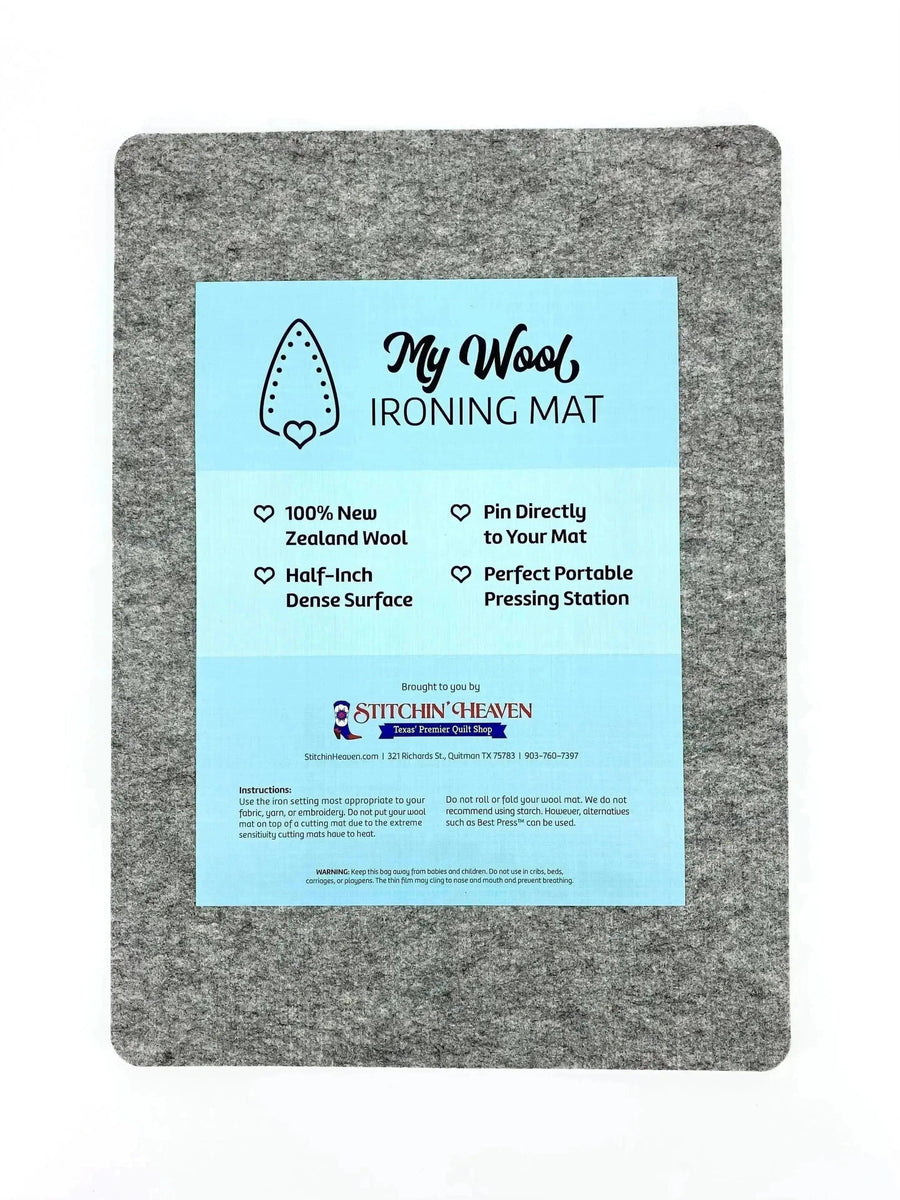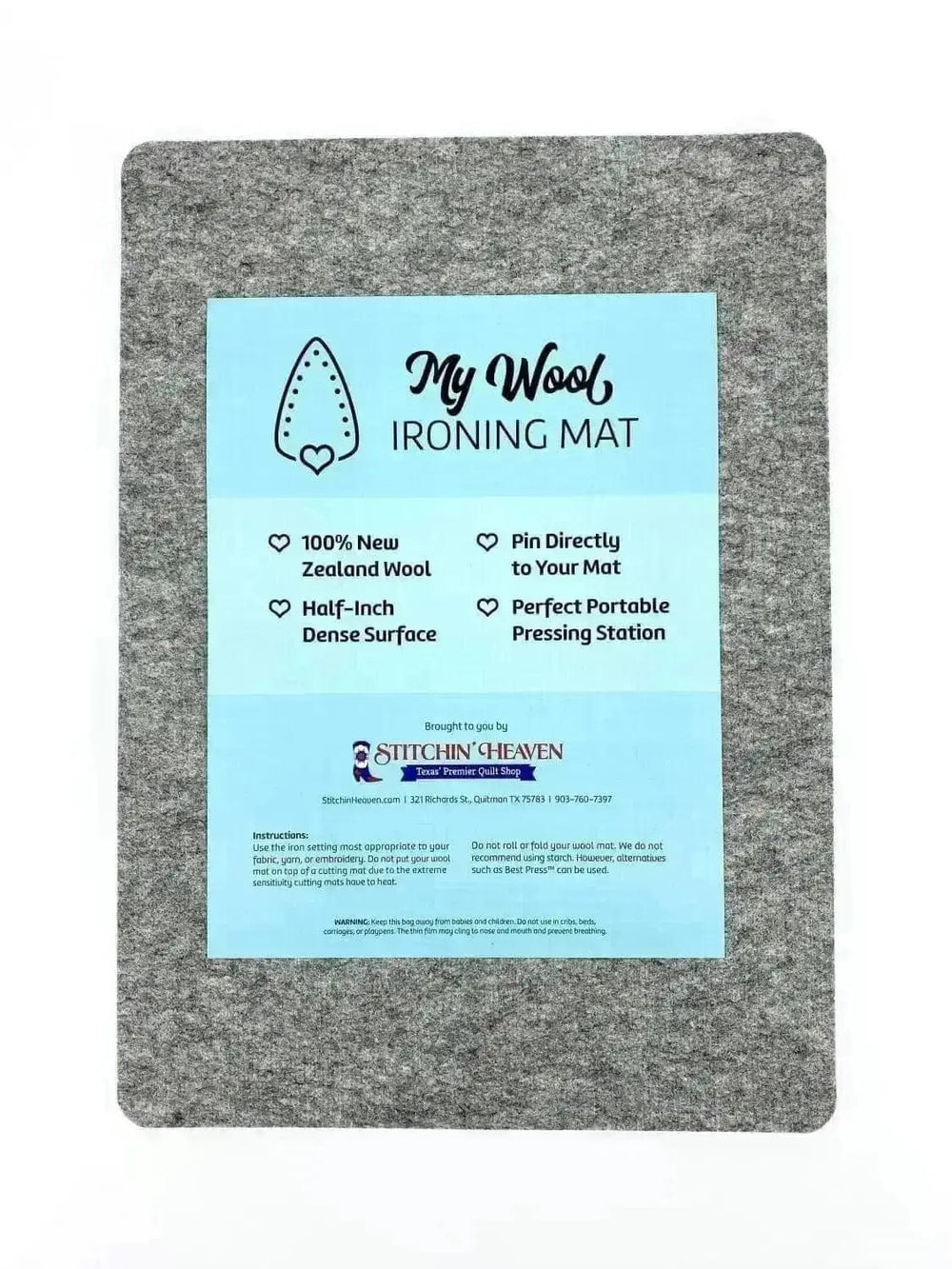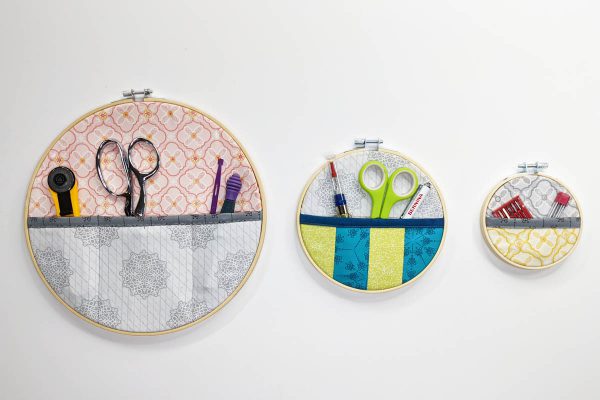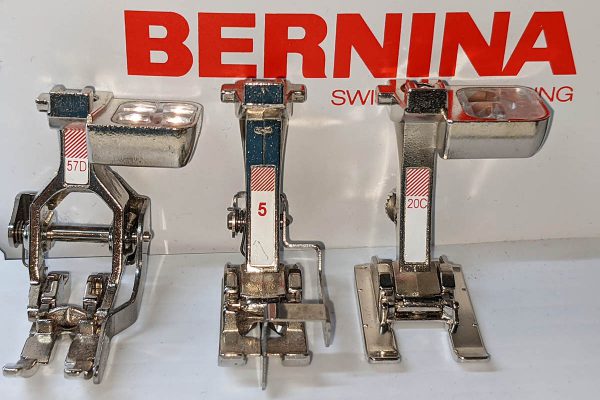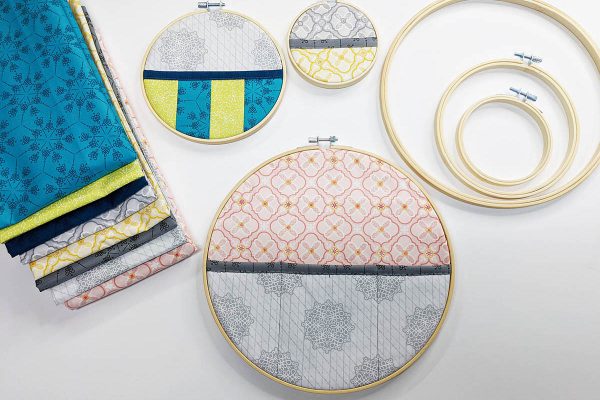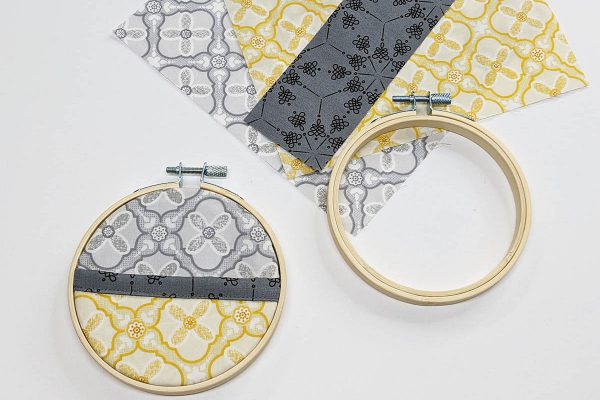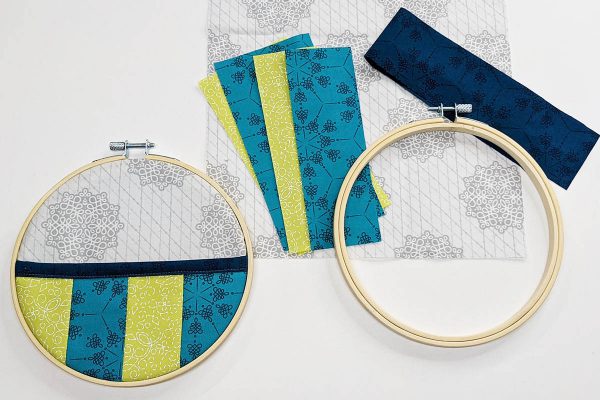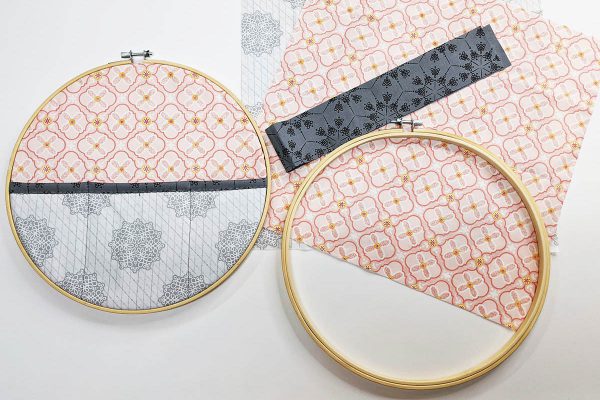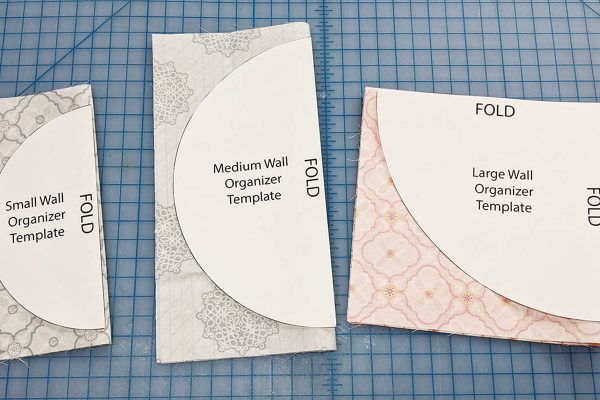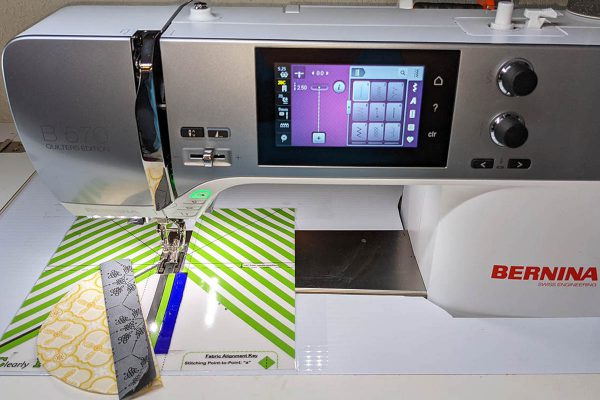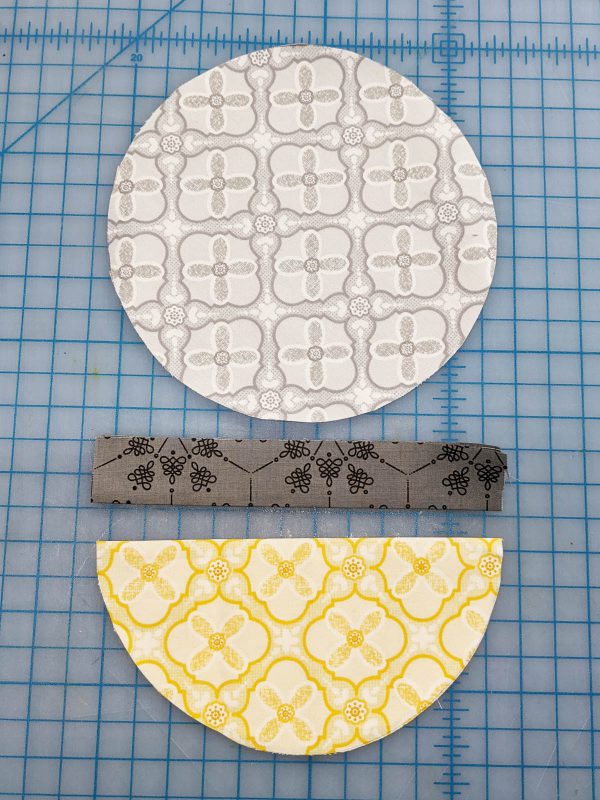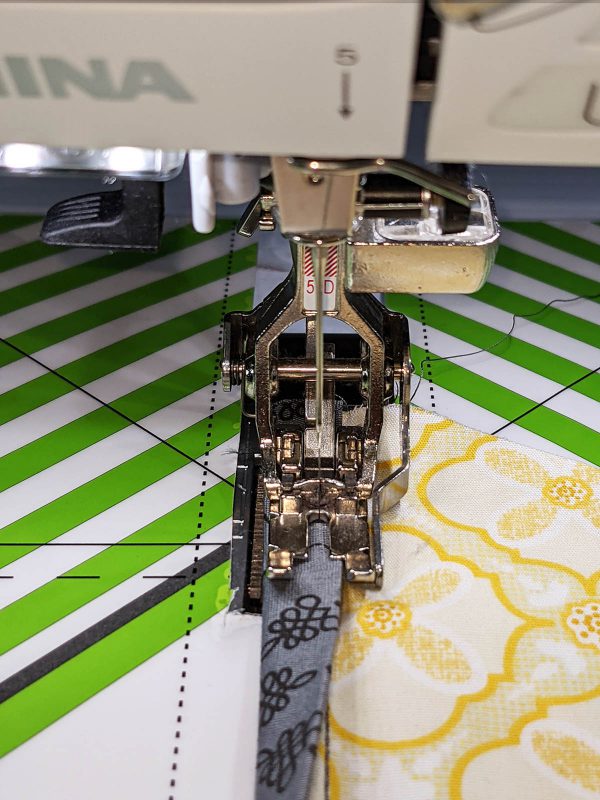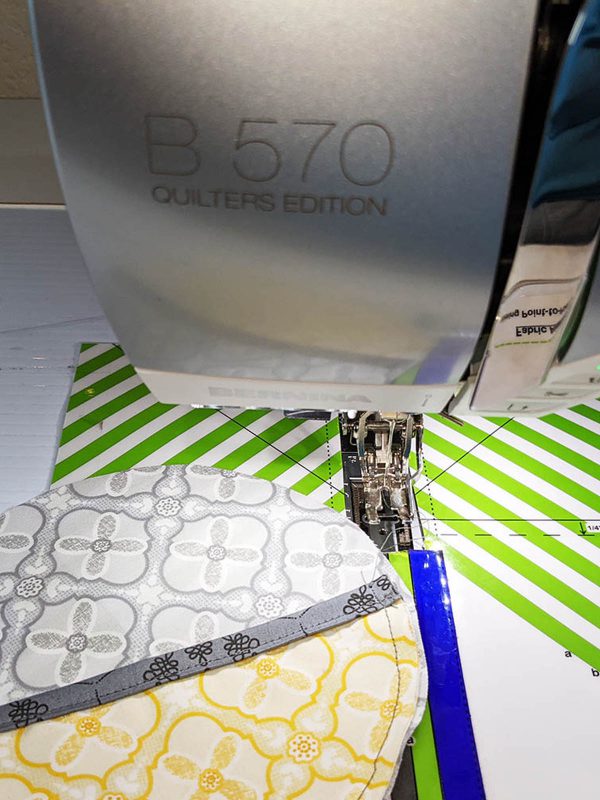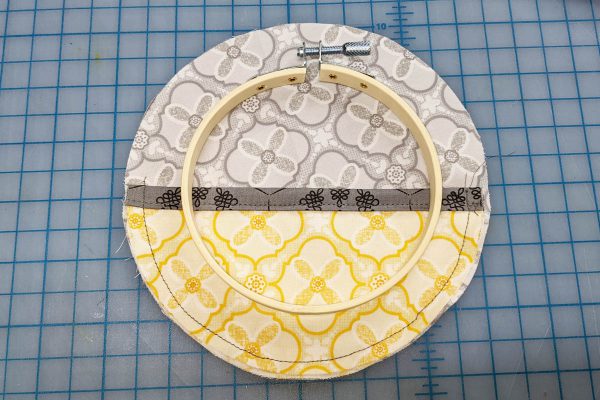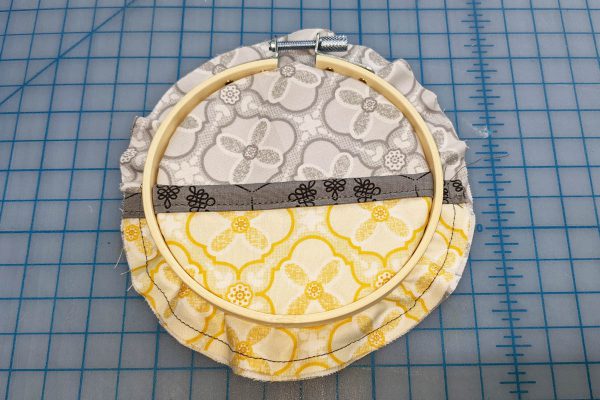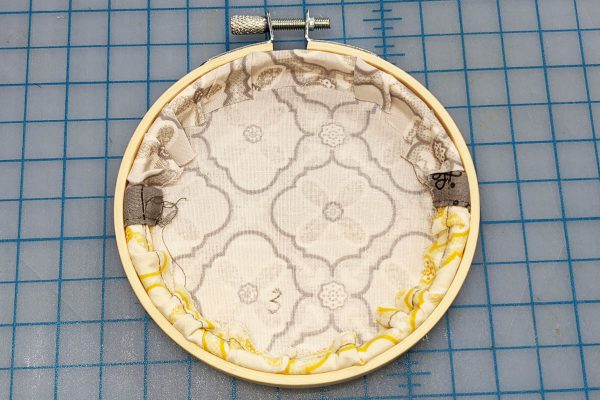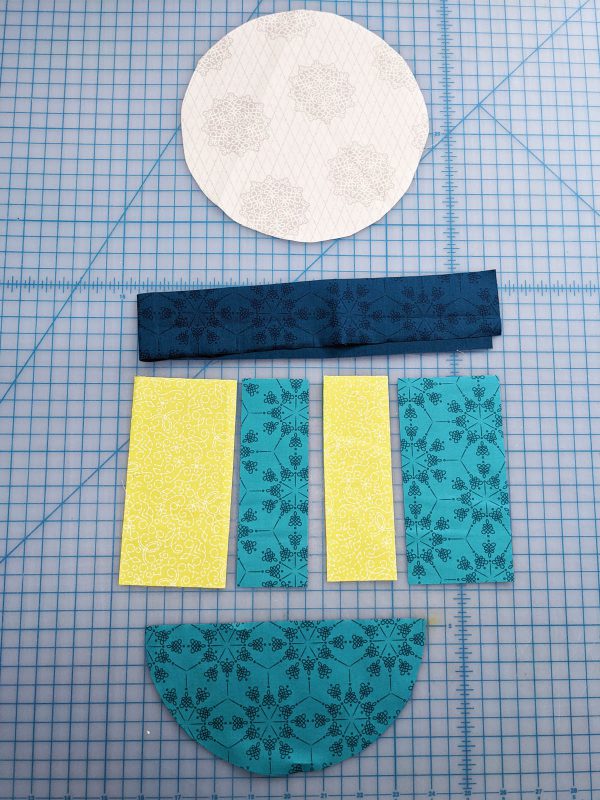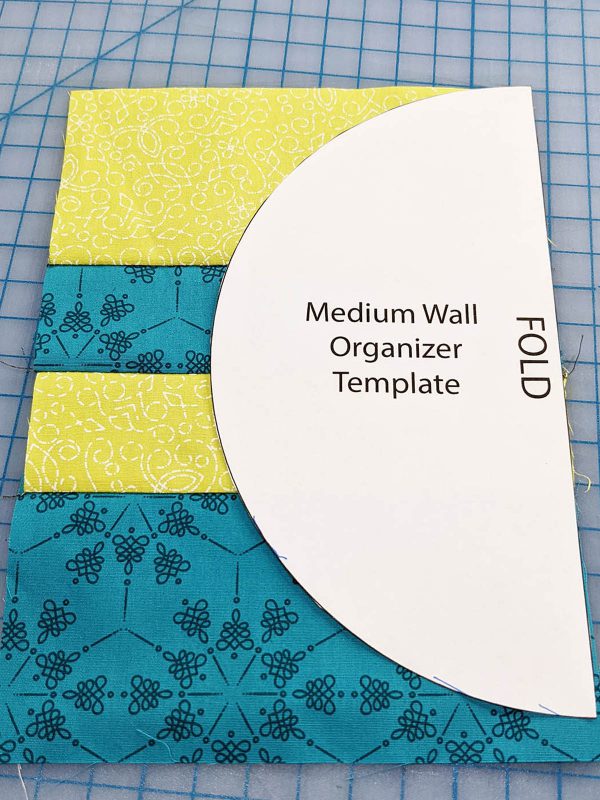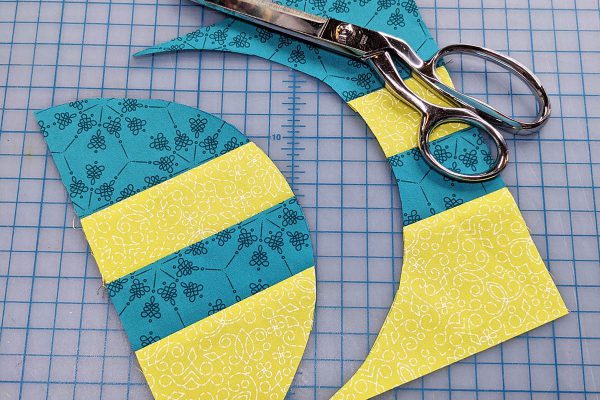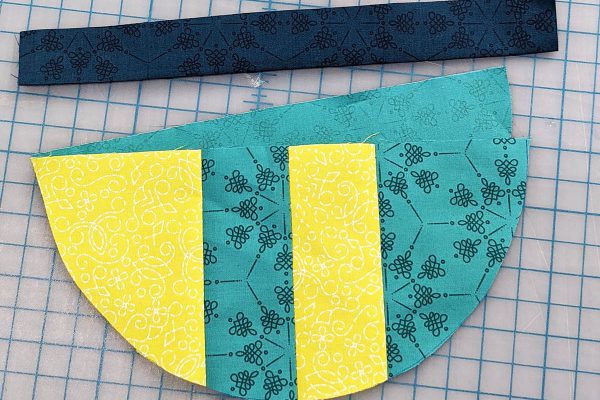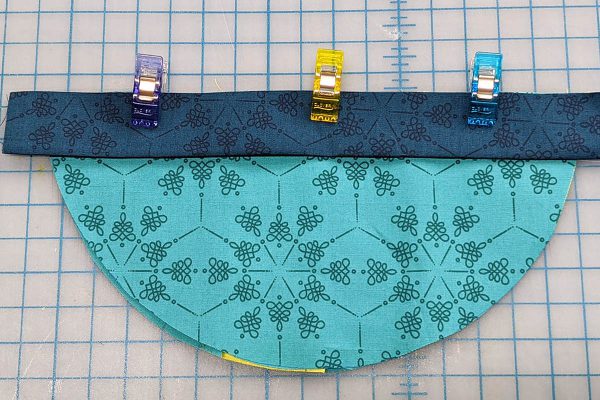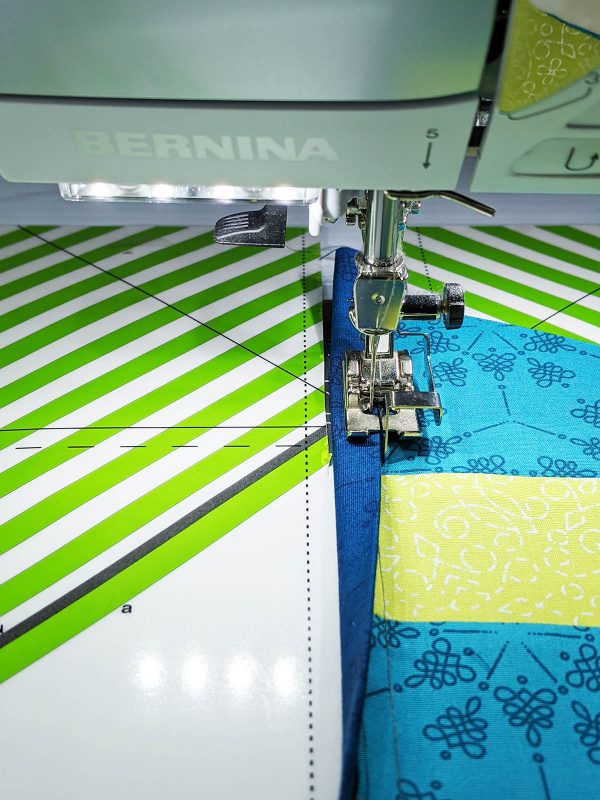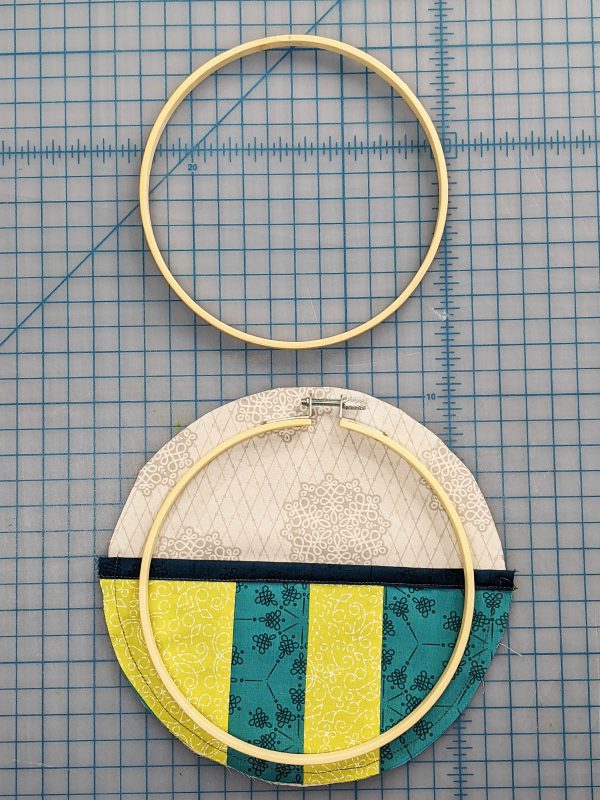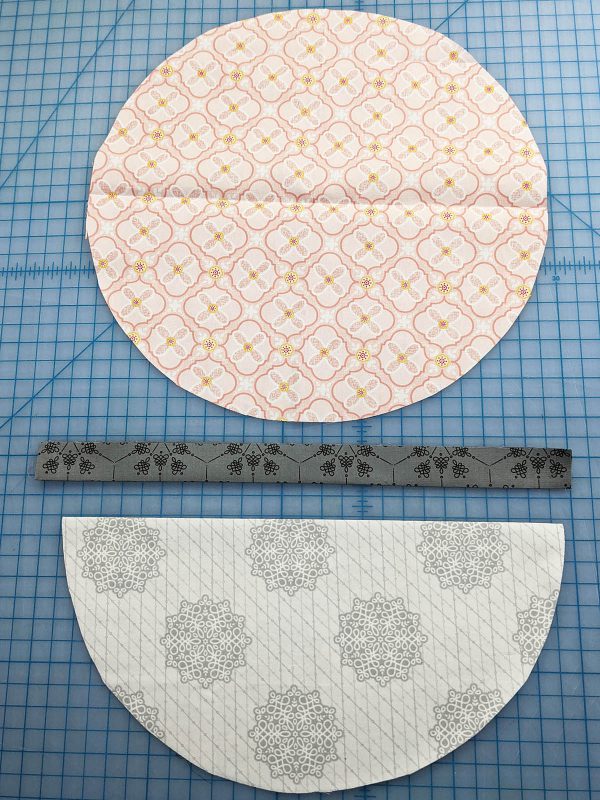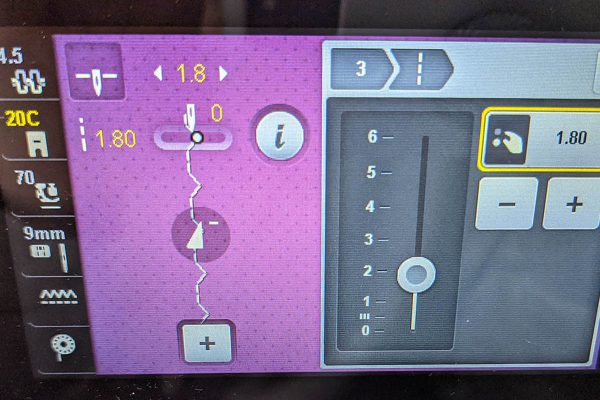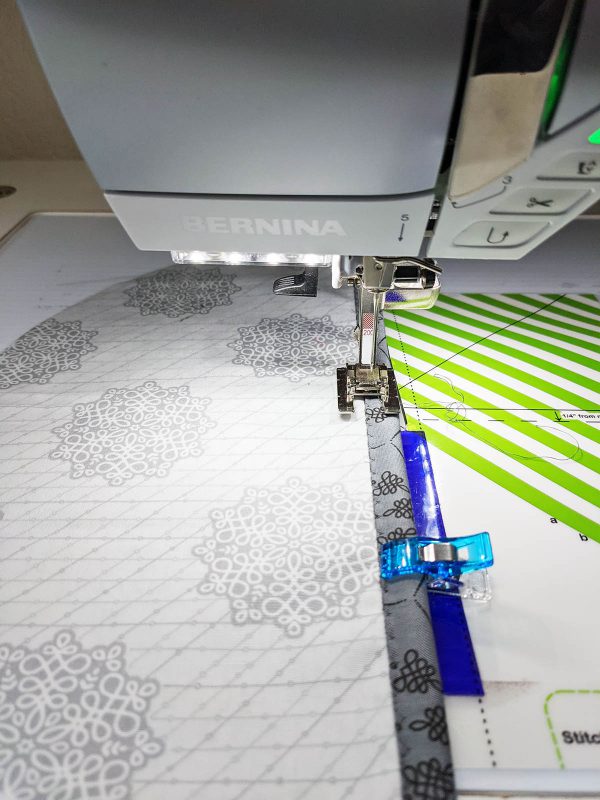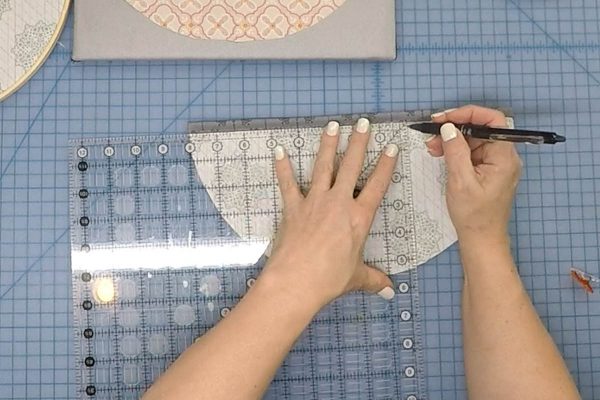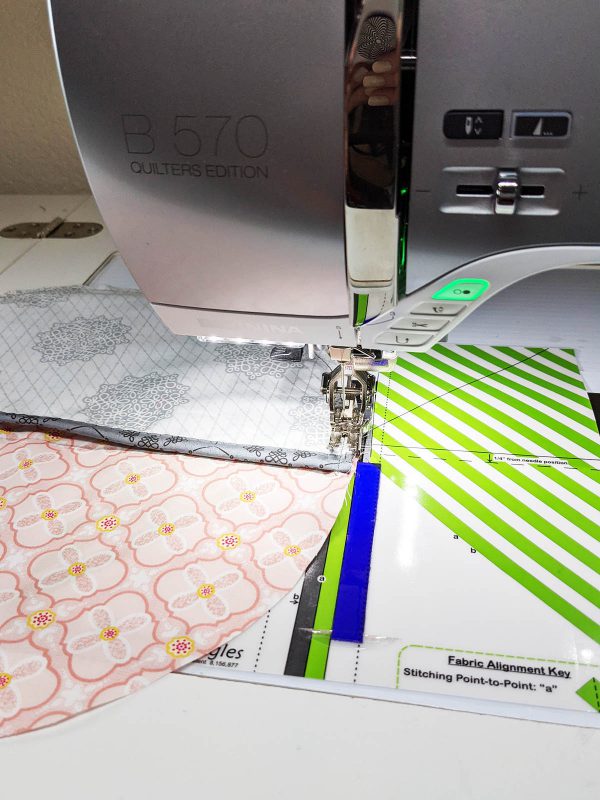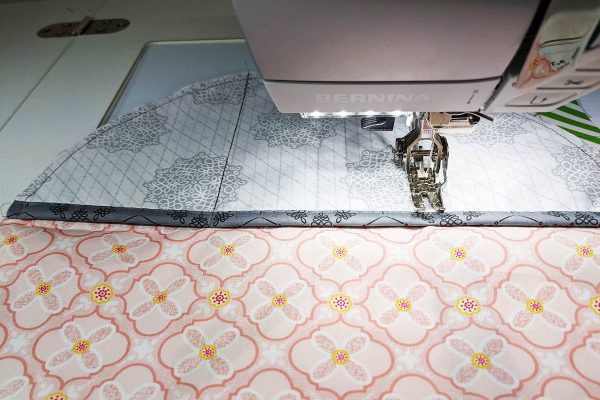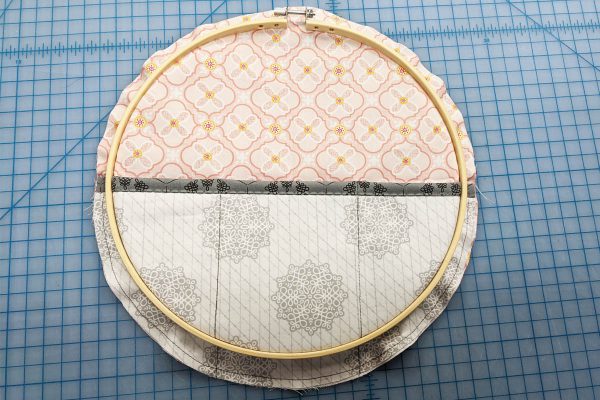How to Sew Wall Organizers
How to Sew Wall Organizers
These adorable wall organizers are quick and easy to make! These are a perfect afternoon project and great for beginners. They can be used in any room that needs a little organization! Use in the sewing room by your sewing machine or cutting area to free up table space. Use in the bathroom or bedroom for some added storage. They are so quick to make and pretty to look at that they would also make a great gift for someone special. Just change the fabrics and sizes to meet your needs.
This blog will cover three different sizes, different pocket styles, and different ways to sew the finished binding edge in place. Each method uses a different pressing foot. So let’s get started!
You can use scrap fabrics or fat quarters for this project. The wall organizer finished size is based on the embroidery hoop size that is used. For this pattern, we used 4”, 6”, and 10” wood embroidery hoops. You can also get different size embroidery hoops or use bright plastic versions to change the Wall Organizers’ style.
Materials to Sew Wall Organizers
- Two fat quarters and 1/8 yard of fabric for each organizer
- Three embroidery hoops, one of each size, 4” diameter, 6” diameter and 10” diameter
- Circle templates from download
- Cutting mat and rotary cutter
- 15” square clear acrylic ruler
- Hot glue gun and glue sticks
- Iron and pressing surface
- Scissors
- Wonder clips
- Fabric marking pencil
- Matching cotton thread like Aurifil-50 weight
- Sewing machine (I use BERNINA 570 QE)
- Straight stitch or patchwork foot (I use Patchwork Foot with Guide #57D)
- OPTIONAL: Blindstitch Foot #5 and Open Embroidery Foot #20
- OPTIONAL: Aurifil invisible thread
- Wall Organizers Pattern
Purchase Your Fabric and Hoop Kit Today!
Click here to purchase the DIY Wall Organizer kit including all of the fabrics and embroidery hoops needed to create these wall organizers. Available while supplies last!
Steps to Sew Wall Organizers
Step 1: Cutting the Templates and Fabric
Download the paper templates. Cut out the three circle templates on the printed line.
Cut the following fabric pieces for each wall organizer.
Small Organizer
- One 7” square for the back piece from one fat quarter
- One 7” square for the pocket from one fat quarter
- One 2” x 8” strip for the pocket binding
Medium Organizer
- One 9” square for the back piece from one fat quarter
- One 3” x 6” strip and one 2” x 6” from one fat quarter
- One 4 ½” x 9” strip, 3” x 6” strip and one 2” x 6” from one fat quarter
- One 2” x 10” strip for the pocket binding
Large Organizer
- One 13” square for the back piece from one fat quarter
- One 13” square for the pocket from one fat quarter
- One 2” x 14” strip for the pocket binding
Step 2: Cutting the Circles
Small Organizer
Fold one 7” square in half, right sides together, and place the small wall organizer template on top of the folded fabric. Align the template edge marked “FOLD” with the folded edge of the square. Trace the template onto the fabric using a fabric pencil. Cut on the drawn line through both layers of fabric to cut one small circle. Repeat with the second 7” square to cut another small circle.
Medium Organizer
Fold the 9” square in half, right sides together, and place the medium wall organizer template on top of the folded fabric. Align the template edge marked “FOLD” with the folded edge of the square. Trace the template onto the fabric using a fabric pencil. Cut on the drawn line through both layers to cut the medium circle.
Place the medium wall organizer template on top of the 4 ½” x 9” strip, aligning the straight edge of the template with the long edge of the rectangle. Trace the template and cut the fabric on the drawn line to make the pocket lining piece.
Large Organizer
Fold one 13” square in half from side to side, right sides together. Now fold the fabric again from top to bottom to fold the square into quarters. Place the large wall organizer template on top of the folded fabric. Align the template edges marked “FOLD” with the folded edges of the square. Trace the template onto the fabric using a fabric pencil. Cut on the drawn line through all the layers to cut the large circle. Repeat with the second 13” square to cut a second large circle.
Step 3: Get Ready to Sew
This project is stitched with straight stitches and 1/4″ seams. I recommend using a Patchwork Foot for the project (I use Patchwork Foot with Guide #57D). I will also cover how to sew the binding edge in place using the Blindstitch Foot #5 and Open Embroidery foot #20. These two feet are not required to make this project.
Small Wall Organizer
Fold the small pocket circle in half, wrong sides together, and press to make the pocket. Fold the 2” x 8” strip in half lengthwise, wrong sides together, and press to make the binding strip.
Align the raw edges of the binding with the straight edge of the pocket on the backside of the pocket and use wonder clips to clip the two pieces together. Sew the binding strip to the pocket back, using a 1/4″ seam.
Press the binding strip up and over the pocket edge. Turn the binding over to the top of the pocket edge to the front of the pocket and clip in place using wonder clips.
To do the first topstitch method, use the small inset of the Patchwork Foot with Guide #57D presser foot. Align the edge of the binding with the inset on the foot as shown above. Sew through all the layers using the inset as a guide to sew 1/8” top stitch along the binding edge to complete the pocket. Trim the binding even with the circle to complete the pocket.
Place the finished pocket on top of the 7” background circle, aligning the edges, and clip the two pieces together. Sew the pocket to the background using a ¼” seam allowance to make the small organizer insert.
Separate the two halves of the 4” embroidery hoop. Place the outer hoop on top of the small organizer insert, centering it from the edges. Make sure the screw on the embroidery hoop is at the top of the insert and parallel to the pocket edge.
Carefully pick up both the outer hoop and fabric insert together and place them over the inner hoop. Press the three pieces together, keeping the insert in the center of the hoop. Adjust as needed and tighten the screw at the top of the embroidery hoop.
Flip the small wall organizer to the back. Using a glue gun, glue the raw edges of the fabric insert to the inside of the embroidery hoop interior to complete the Small Wall Organizer.
Medium Wall Organizer Pieced Pocket Option
For the Medium Wall Organizer, we are going to make a pieced pocket front rather than use just one piece of fabric. Sew the cut strips for the Medium Wall Organizer together to make the pocket front in the following order, 3” x 6” color #1 strip, 2” x 6” color #2 strip, 2” x 6” color #1 strip, and 3” x 6” color #2 strip, along the long edges to make the pocket front.
Use the Medium Wall Organizer template to trace the pocket shape onto the sewn strip set.
Cut on the drawn line to cut out the pocket front.
Place the pocket front and pocket lining, wrong sides together, aligning the raw edges.
Fold the 2” x 10” binding strip in half, wrong sides together, and press.
Align the raw edges of the binding strip with the straight edges of the pocket and pocket lining. The binding strip should be on top of the pocket lining piece. Clip the three pieces together.
Using a ¼” seam, sew the three layers together. Press the binding up and wrap it to the front of the pocket.
For the second style of binding finishing stitch, I used Blindstitch Foot #5. This foot has a metal guide at the base of the foot. This guide will ride along the binding strip edge and the stitch will fall on either side of the guide based on where you position your needle. You will need to move the needle position to the left to the desired width of the topstitch. I recommend trying the topstitch on a practice piece to decide how far you would like the topstitch from the binding edge. Sew the binding edge down using the guide on the foot to keep the stitches parallel to the binding edge. Trim the binding strip even with the circle to complete the pocket.
Repeat the assembly instructions from the Small Wall Organizer above to sew the medium pocket to the medium background circle, to position the medium organizer unit into the 6″ embroidery hoop, and to glue the raw edges to the back to complete the medium organizer.
Large Wall Organizer Divided Pocket Option
For the Large Wall Organizer, we are going to make a divided pocket. Fold the large pocket circle in half, wrong sides together, and press to make the pocket. Fold the 2” x 14” strip in half lengthwise, wrong sides together, and press to make the binding strip.
Align the raw edges of the binding with the straight edge of the pocket on the backside of the pocket and use the wonder clips to clip the two pieces together. Using a 1/4″ seam, sew the binding strip to the pocket back. Press the binding up and wrap to the front of the pocket. Clip the binding in place with wonder clips.
The final method for sewing the finished edge of the binding to the pocket is using a blind hem stitch and the Open Embroidery Foot #20. On the BERNINA 570 QE, it is stitch #3. Adjust the stitch width and stitch length to 1.8. Move the needle position to the center position. I recommend using thread that matches the binding fabric or Aurifil Invisible thread for this stitch.
Place the pocket under the presser foot with the binding on the right side. Center the binding edge with the center of the foot. My foot has a subtle line going down the center and I use this as my reference point. The blind hem stitch has a straight part of the stitch that should go in the pocket piece and the bite of the stitch should extend into the binding edge. This is one of my favorite stitches to use and it is the stitch I like to use to bind all of my quilts and projects.
For the Large Wall Organizer, we are going to divide the pocket into three smaller pockets. To mark the large pocket, fold the pocket in half to find the vertical centerline. Using a ruler and a fabric pencil, measure over from the centerline 2” to the right and draw a vertical line on the pocket front. Measure over from the centerline 2” to the left and draw a second vertical line on the pocket front.
Place the pocket onto the large background circle, aligning the raw edges, and sew the two pieces together using a ¼” seam.
Sew through the pocket and back circle on the drawn lines to divide the large pocket into three smaller pockets.
Repeat the instructions for assembly instructions from the Small Wall Organizer above to position the large organizer insert into the embroidery hoop and to glue the raw edges to the back of the organizer.
I hope you have enjoyed this tutorial on making this simple and fun project. The options for these are endless. You can piece the background instead of the pocket, add some fun applique or embroidery, or jazz them up with some fun embellishments like beads, buttons, or ribbon.
